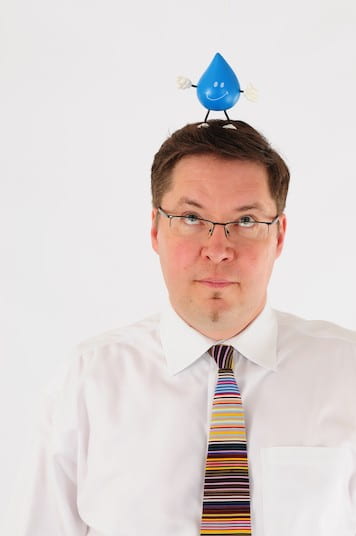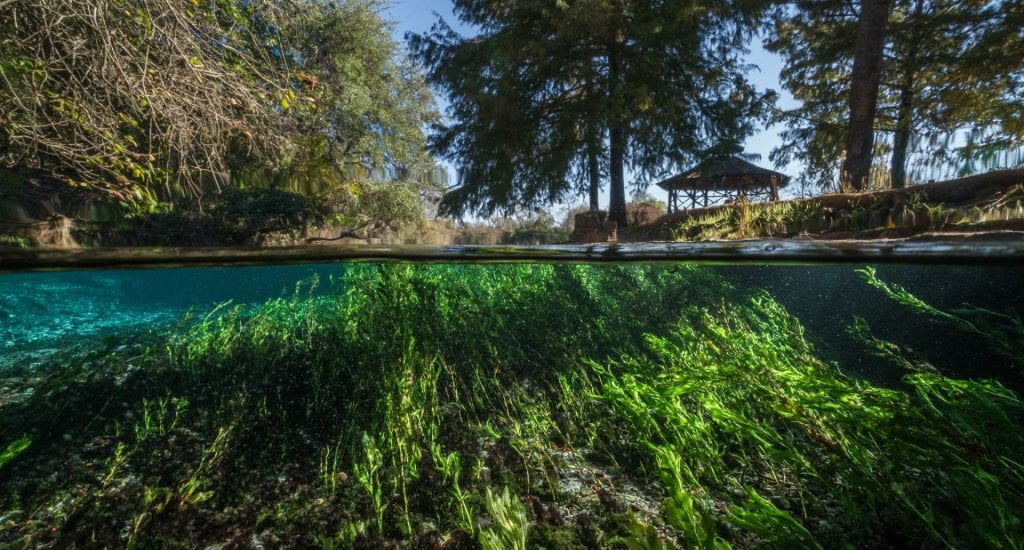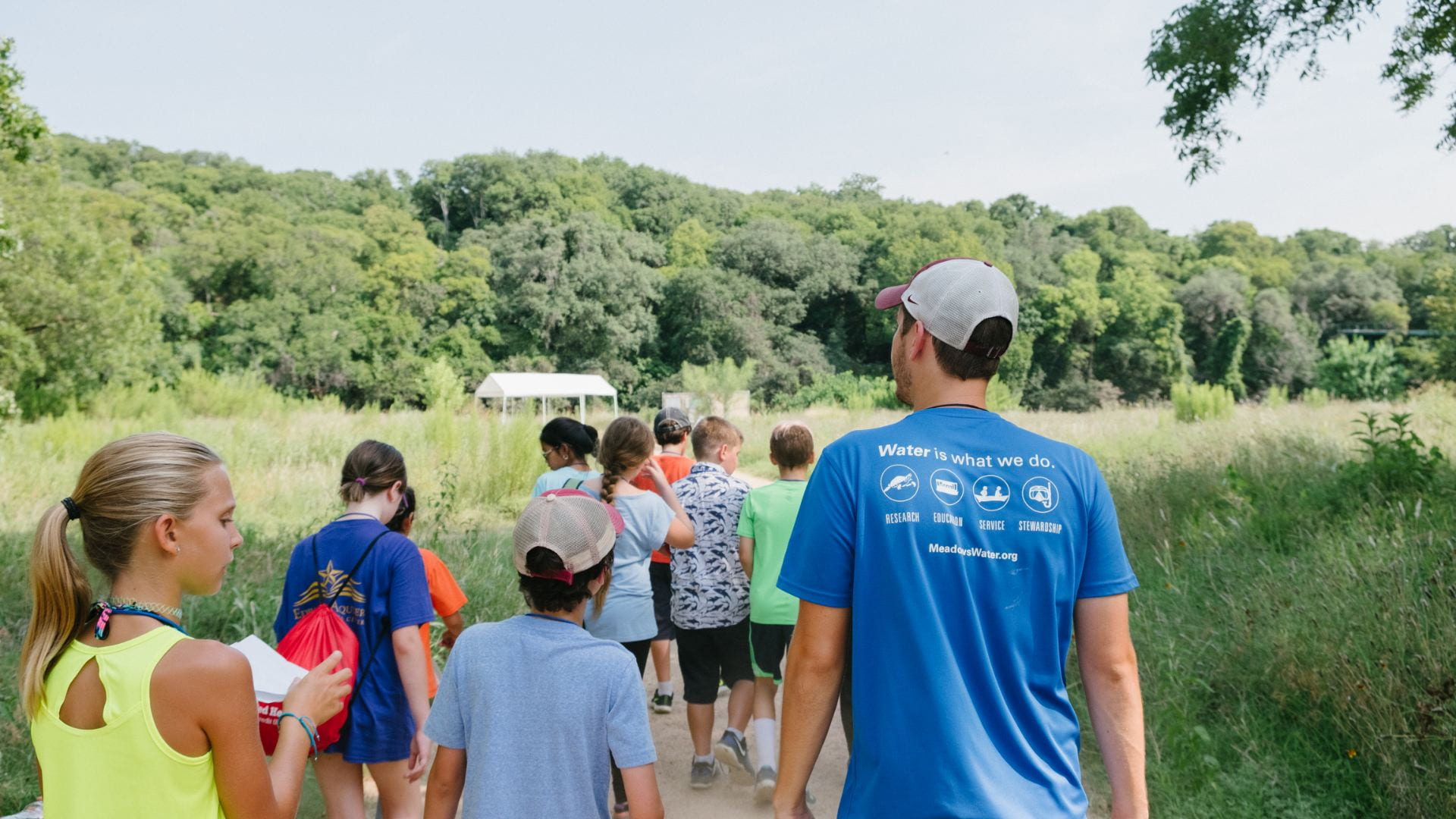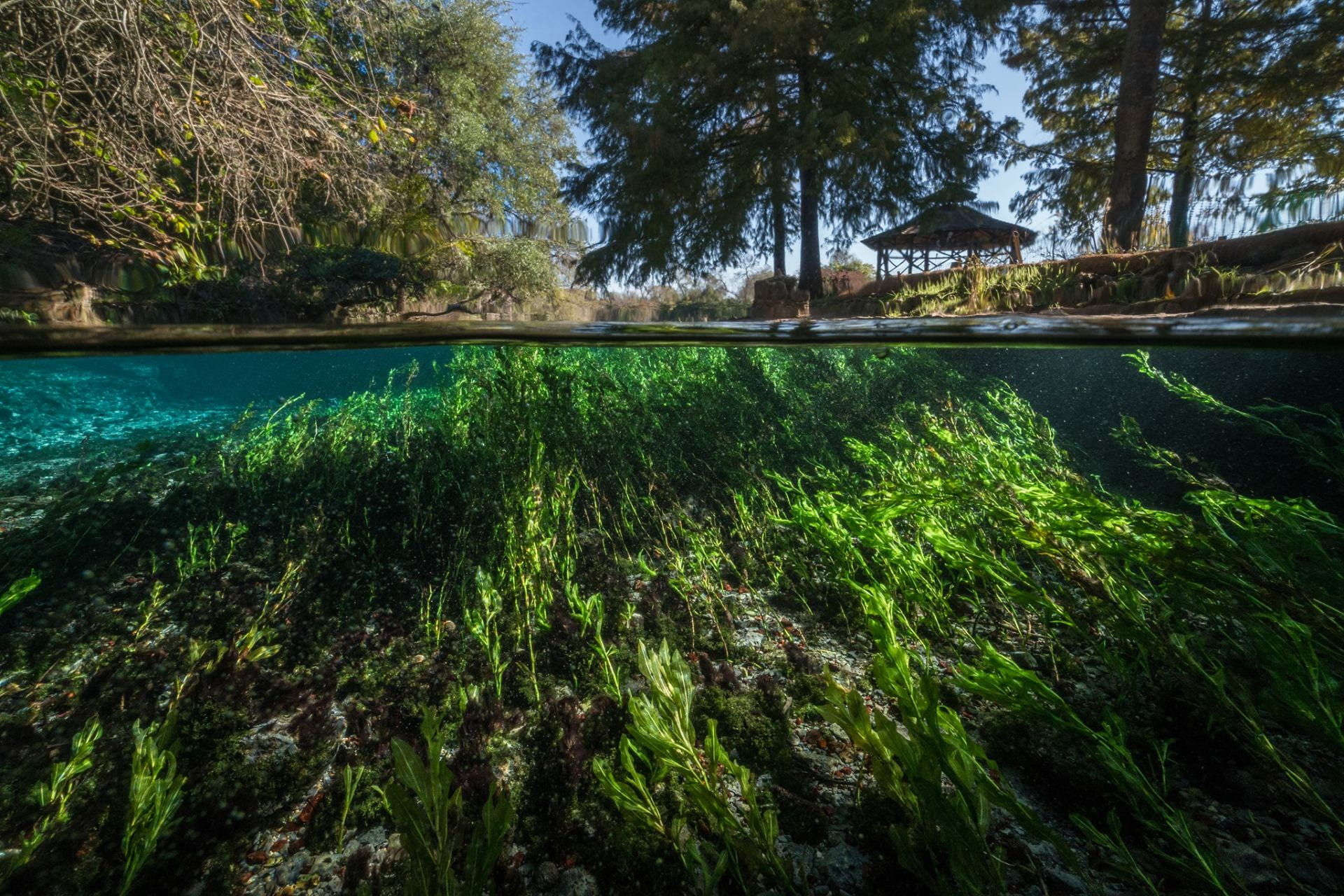With 38 public universities and 35 private colleges and universities in the state and many more across the country (and the world) interested in Texas, there’s a great deal of academic scholarship focused on water in the Lone Star State. In this column, I provide brief summaries to several recent academic publications on water in Texas.

Let’s start thinking about water!
Exploring the Effects of Interpreters’ Experiences of Mindfulness Interventions on Their Connection with Nature and Subsequent Environmental Interpretation
Interpreter leading a guided tour with field trip students at Spring Lake in San Marcos, Texas.
Speaking of thinking about water, this paper is literally about thinking about water through mindfulness. In this day of mobile devices, omnipresent connectedness and aspirational multi-tasking, it’s easy to let the world slip by un-noticed. Mindfulness— “being fully present in the moment, nonjudgmentally and with heightened awareness and sensitivity”—is essentially the academic equivalent of “Stop and smell the roses.”
Dussler and Deringer employed mindfulness exercises with interpreters at San Marcos Springs to assess whether or not they helped interpreters be more engaged with the natural world around them. In short, yes. Participants noticed things they hadn’t noticed before and, more importantly, became more passionate about what they were doing. One participant noted that while facts are useful, emotion is what makes a difference in the way someone interacts with nature.
Citation
Dussler, R., and Deringer, S.A., 2020, Exploring the effects of interpreters’ experiences of mindfulness interventions on their connection with nature and subsequent environmental interpretation: Journal of Interpretive Research, v. 25, p. 26-45. https://journals.sagepub.com/doi/full/10.1177/1092587220963556
Acquiring Environmental Flows: Ecological Economics of Policy Development in Western U.S.
Comal Springs in New Braunfels, Texas. Credit: Edwards Aquifer Authority
A lot has to happen when creating a water market that benefits the environment. Colby looks at two case studies, one in the Edwards Aquifer and another in the (other) Colorado River. However, what I found particularly interesting in this paper was the discussion of the theoretical underpinnings of policy change, namely Social Ecological Economics of Water and Punctuated Equilibrium Theory.
Social Ecological Economics of Water builds on ecosystems services to include the social aspects of water which, in the words of Colby “remind us that power relations and conflicts are central to water policy dynamics” and that “institutions are born out of conflict” (Edwards Aquifer Authority, anyone?). The Punctuated Equilibrium Theory “provides indicators of readiness for policy paradigm shifts,” which includes (1) economic impetus for policy innovation, (2) pilot tests of innovations, (3) the involvement of non-governmental institutions and (4) the involvement of academia. Non-governmental institutions and academia can often be more innovative on policy than existing governmental institutions, saddled as they are with existing law.
Citation
Colby, B., 2020, Acquiring environmental flows: ecological economics of policy development in western U.S.: Ecological Economics 173 106655. https://doi.org/10.1016/j.ecolecon.2020.106655
Finding New Sources of Water for Semi-arid Cities in Unlikely Places
Butler and crew looked at a way to estimate the amount of combined sanitary wastewater and stormwater captured through open air oxidation ponds available for reuse. They developed a method and tested it at Hereford, Canyon and Friona, all communities on the Texas High Plains. Given their combined sewer systems, these communities have an opportunity to not only reuse municipal wastewater but to also use their systems to harvest stormwater. Whereas municipal wastewater has a more constant flow over the year, stormwater adds seasonality to the volume of water available for reuse. In the case of Hereford, Canyon and Friona, volumes of available water were lower in the fall and winter and much higher in the spring and summer. Treating this water for reuse could offset groundwater pumping by 45 to 50 percent in one city to 100 percent in another.
Citation
Butler, E., Howell, N., and Guerrero, B., 2020, Finding new sources of water for semi-arid cities in unlikely places: Environmental Science and Pollution Research (2020) 27:6112–6125. https://doi.org/10.1007/s11356-019-07049-y
Join Our Mailing List
Subscribe to Texas+Water and stay updated on the spectrum of Texas water issues including science, policy, and law.



